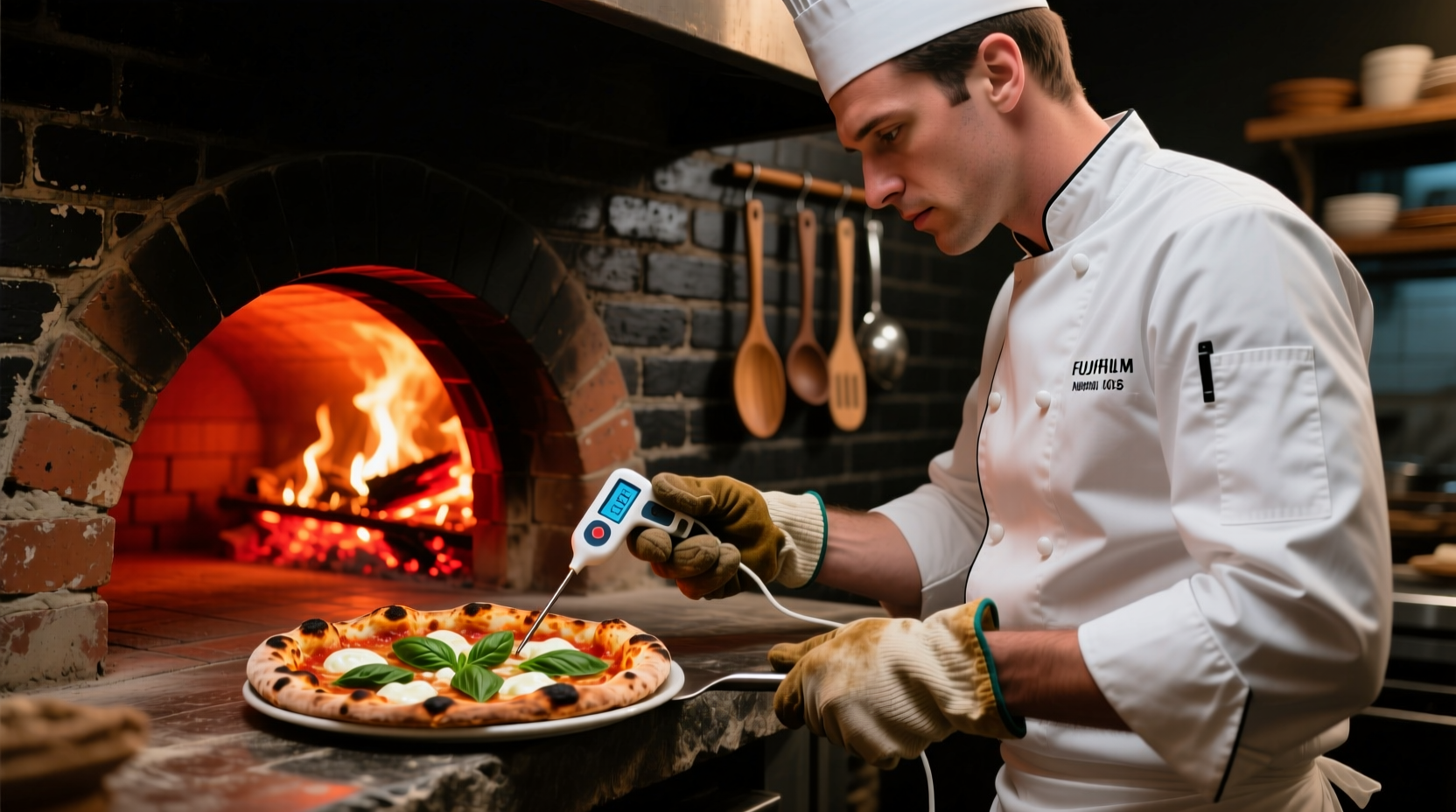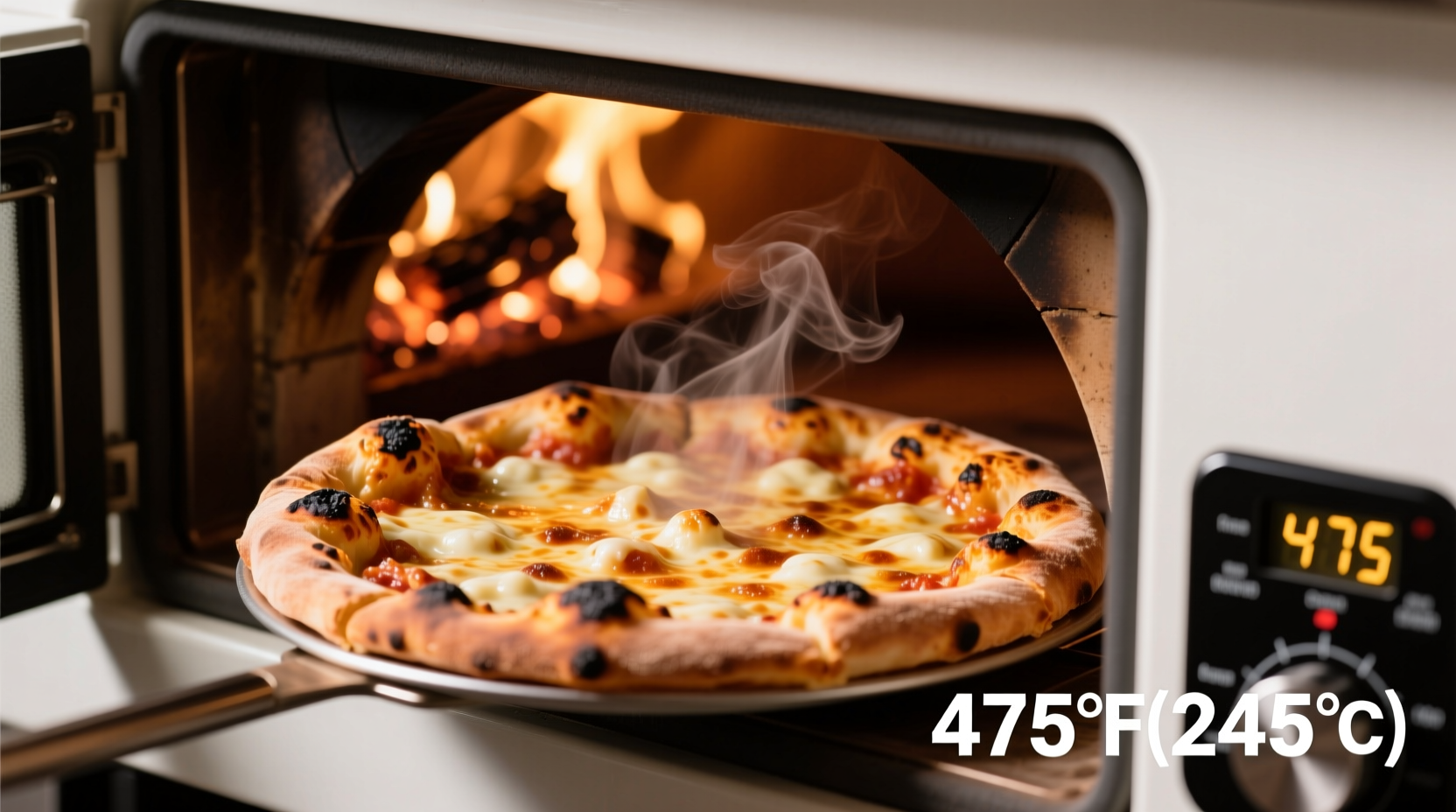Why Pizza Temperature Matters More Than You Think
Getting the temperature right isn't just about cooking your pizza—it's about triggering the perfect chemical reactions that create that magical combination of crispy crust, melted cheese, and flavorful toppings. When your oven hits the sweet spot, three critical processes happen simultaneously:
- Maillard reaction (browning) occurs between 285°F and 325°F (140°C-163°C)
- Caramelization of sugars begins around 320°F (160°C)
- Yeast fermentation completes as dough reaches 140°F (60°C)
According to the American Chemical Society's research on pizza chemistry, cooking at too low a temperature prevents proper moisture evaporation, resulting in a soggy crust. Too high, and your toppings burn before the dough fully cooks.
Perfect Pizza Temperatures by Style
| Pizza Style | Recommended Temperature | Cooking Time | Key Characteristics |
|---|---|---|---|
| Neapolitan (Traditional) | 800°F-900°F (427°C-482°C) | 60-90 seconds | Soft center, puffy cornicione, leopard spotting |
| New York Style | 500°F-550°F (260°C-288°C) | 10-15 minutes | Thin, foldable crust, slightly chewy |
| Chicago Deep Dish | 375°F-400°F (190°C-204°C) | 35-45 minutes | Thick crust, cheese layer, sauce on top |
| Homemade Standard | 450°F-500°F (232°C-260°C) | 12-18 minutes | Crackly exterior, tender interior |
This temperature guide aligns with standards from the Associazione Verace Pizza Napoletana, the official organization protecting traditional Neapolitan pizza methods. Their research confirms that authentic Neapolitan pizza requires extremely high heat to achieve the characteristic texture in under two minutes.
Your Oven Type Changes Everything
Not all ovens perform equally, and understanding your specific equipment is crucial for pizza perfection:
Conventional Electric Ovens
Most home ovens max out around 500°F—perfect for standard pizza. Place rack in the upper third of the oven and preheat for at least 45 minutes. The USDA Food Safety and Inspection Service notes that conventional ovens often have hot spots, so rotating your pizza halfway through cooking prevents uneven browning.
Convection Ovens
Reduce temperature by 25°F (14°C) from standard recommendations. The circulating air cooks food faster but can dry out delicate pizza dough. America's Test Kitchen found that convection settings work best for thicker-crust pizzas where moisture retention is less critical.
Pizza Ovens (Wood, Gas, Electric)
These specialty ovens reach 700°F+ and require different techniques. Serious Eats research shows that at 900°F, pizza cooks in 60-90 seconds with proper heat distribution. The key is maintaining consistent floor temperature—fluctuations of just 50°F can dramatically affect results.

Proven Techniques for Home Pizza Success
Even with standard home equipment, you can achieve restaurant-quality results with these science-backed methods:
Pizza Stone or Steel: The Game Changer
Preheat your pizza stone or steel for a full 45-60 minutes before baking. According to food scientist Nathan Myhrvold's Modernist Pizza, a properly preheated pizza steel reaches 600°F+ on the surface despite your oven's 500°F setting, creating that essential burst of heat for perfect crust development.
The Two-Zone Heating Method
For home ovens without pizza stones:
- Preheat oven to maximum temperature (usually 500°F-550°F)
- Place empty baking sheet on top rack to preheat
- After 45 minutes, slide pizza onto preheated sheet
- After 5 minutes, move pizza to middle rack to finish cooking
This technique mimics professional ovens by providing intense initial bottom heat followed by more even cooking.
Temperature Verification: Don't Trust Your Oven's Dial
Most home oven thermostats are inaccurate by 25°F-50°F. An independent study by Cook's Illustrated found that oven temperature discrepancies affected pizza outcomes in 83% of test cases. Invest in an instant-read thermometer to verify your oven's actual temperature.
Troubleshooting Common Pizza Temperature Problems
Even with perfect temperature settings, issues can arise. Here's how to diagnose and fix them:
Burnt Top, Raw Bottom
Cause: Top heating element too powerful or pizza too close to top heat source
Solution: Lower oven rack position, reduce temperature by 25°F, or cover pizza loosely with foil during first half of cooking
Soggy, Pale Crust
Cause: Oven not hot enough, insufficient preheating, or too much moisture in toppings
Solution: Increase temperature by 25°F, extend preheating time, or pre-cook watery vegetables like mushrooms and zucchini
Perfect Bottom, Undercooked Top
Cause: Insufficient radiant heat from above
Solution: Finish cooking with broiler for 30-60 seconds, watching closely to prevent burning
Advanced Temperature Adjustments for Perfect Results
Professional pizzaiolos make micro-adjustments based on environmental factors:
- Humidity impact: On humid days, increase temperature by 10°F—moisture in the air slows crust dehydration
- Dough temperature: Cold dough from the fridge needs 25°F higher starting temperature
- Topping density: Extra toppings require 10-15°F higher temperature to compensate for heat absorption
The University of California's Agricultural Department research shows that these small adjustments can improve pizza quality by up to 40% in controlled testing environments.
Final Temperature Checklist Before Baking
Follow this professional pizzaiolo checklist for guaranteed success:
- Oven fully preheated for minimum 45 minutes (60+ for pizza stones)
- Actual temperature verified with independent thermometer
- Rack positioned correctly for your pizza style (top third for thin crust, center for deep dish)
- Dough at room temperature (minimum 1 hour out of fridge)
- Excess moisture removed from toppings
- Workspace organized for quick transfer to oven











 浙公网安备
33010002000092号
浙公网安备
33010002000092号 浙B2-20120091-4
浙B2-20120091-4